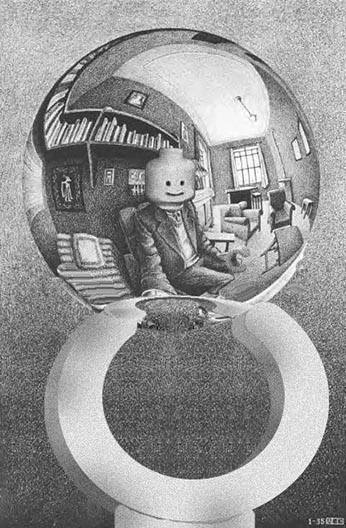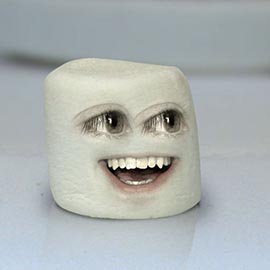The most basic animation exercise is the bouncing ball.
Literally basic, because it involves the most fundamental, most interesting, most robust, most sensual unit of all universe:

Animators, those restless creatures, put the sphere in motion. That’s how bouncing balls are born. Poetic.
But this little ball, fundamental as it is, often becomes just an exercise and is left behind.
Great animators never forget about it, and its principles are apparent in their scenes.
But no one is born great.
Most animators are too busy with everything they need to get right: poses, silhouettes, arcs, anticipations, overlap, constraints etc etc etc.
So, what you see most in animation is just..
“Good enough”
Every animator has once reached a moment when his scene works, his friends and family think it’s super cool, but his fellow animators give that look of ‘it is.. well.. OK’.
I did a lot of work under extremely thigh deadlines, using motion capture, and I felt that everything I delivered was never great. It was just “good enough.”
But I’m stubborn and wanted to be great.
A year ago, on a workshop at iAnimate, I started a scene. I had time and wanted it to be great. But I noticed that I didn’t even know how to do it. My eyes were too accustomed to the “good enough” standard.
Then I saw the light. Right in this video here.
Trent Corey is an amazing animator. His drawings are great, so it was no surprise to see that he begins his scene with “drafts”.
But then I saw how he blocks it out: he uses a 3D bouncing ball, which by itself feel alive: it conveys intention and emotion!
I then realized that if you can breath life into a bouncing ball, you can breath life into anything.
Finding what’s essential
A simple character has: a hip, a chest, a head, two legs and two arms. Already you have seven things to pay attention to.
So, where to start, where to go?
One can eliminate this doubt by leaving only one thing to look at.
Simplifying, you get in touch with what is most essential.
And if you’re nearer to its essence, you can act where it matters.
Altering choreography and rhythm via a bouncing ball
What’s easy is mediocre
When a director says ‘make this character happy!’
The easiest thing to do it to throw a big smile at it.

Try it yourself: look happy.
Now make that grin disappear and try again. Can you feel your body looking for ways to express itself? The neck straightens, the chest opens …
If you walk with that attitude, you’ll probably be lighter and more confident. Even without a smile, or even without holding a pose, people will know that you are happy.
Movement speaks.
And that’s what matters most here. It is what matters to us animators.
How do the movement tells a story!
Looking for these solutions will be less obvious, more difficult. And for that same reason, it will be much more interesting.
To each ball its own story
Keep it simple
I knew an animator who always worried too much about details, while the essence of his scenes were weak.
Even when directed to focus on what mattered, this guy still got lost. As soon as the supervisor asked for a stronger pose, a fear of messing something up and getting it worse would pop up.
That guy was me.
Bringing back the bouncing ball, physically, proved itself to be a way to faster develop the critical eye.
It makes it easier to feel what can be improved. And there is less fear of pushing the animation and exploring.
Plus, the scene is lighter with just a ball.
So use of the bouncing ball to avoid distractions: forget about that elbow crossing the mesh, those curled up fingers, that foot being left behind, those cross-eyed gaze.
All this stuff steal your attention; it takes away your focus.
The bouncing ball is impassive.
But it’s your friend. Let it help you.
Using the bouncing ball to turn bad mocap into something more interesting
Two steps forward, one step back
For those starting from a blank scene it is easy, maybe natural, to keep in mind the essence of the movement.
But with the increased use of mocap, it is required from the animator highly developed eyes - knowing precisely what to use and what to throw away. Something that can only come through experience.
So adding the bouncing ball to the scene may look like extra work.
“I don’t have time for this.”
What you don’t have time for is to fix 30 poses on a character with 47 controllers just to realize you’re left with a dull scene in your hand.
This laziness to take a step back and see the big picture is what makes most of recent animation to look generic, lifeless.
It is increasingly easier to get good references (mocap or video), and it is up to the animator to convey his vision, to add some spices.
The bouncing ball is a way to explore faster, to see what’s wrong faster, to correct it faster, to improve faster.
It helps you to let go of worries and to become free to dare – and this is something good.
If you manage to convey the core emotion of your scene with a simple bouncing ball, it will make the final result so much stronger and so much more enjoyable.
It is just a tool
The bouncing ball is no magic answer to anything. But it is something at your disposal.
I made great improvements on my feel for good animation going back to the most fundamental animation exercise.
And I’ve used this method with some colleagues who were learning and noticed a clear progress.
You must keep in mind that it is only part of the process. Something that can help and shouldn’t take too long. The bouncing ball is a shortcut to what is essential, not a tortuous detour.
So I vote for the return of the bouncing ball.
And let’s add details later.
